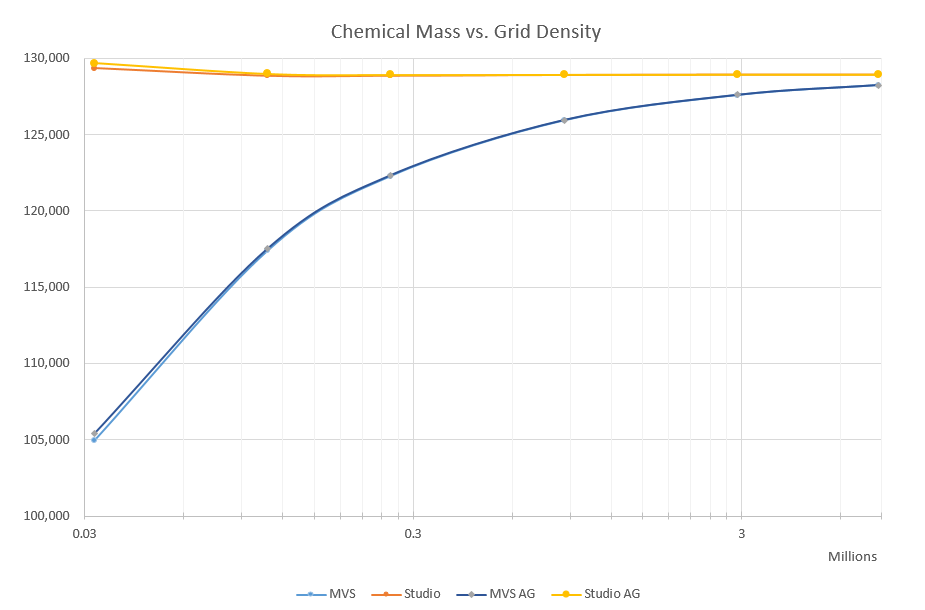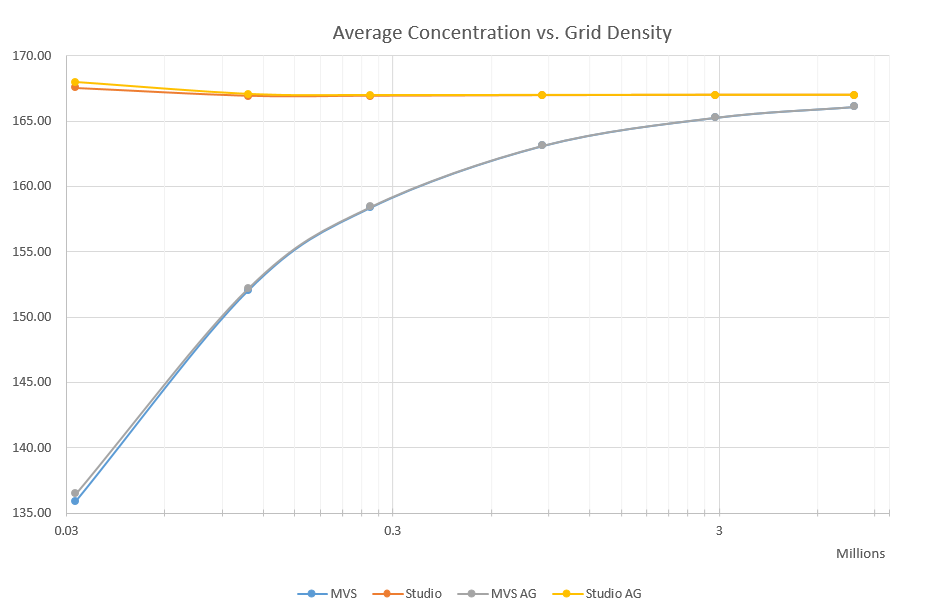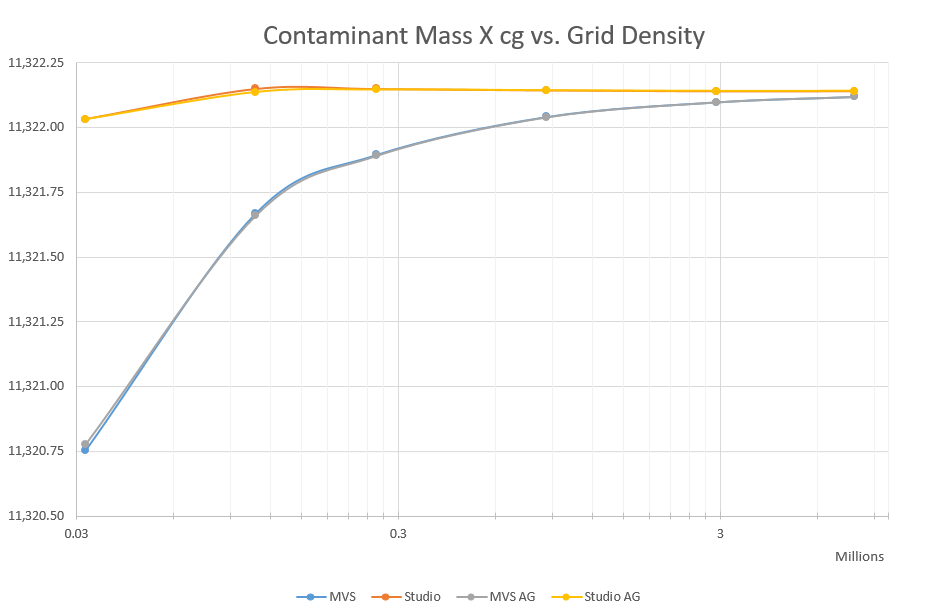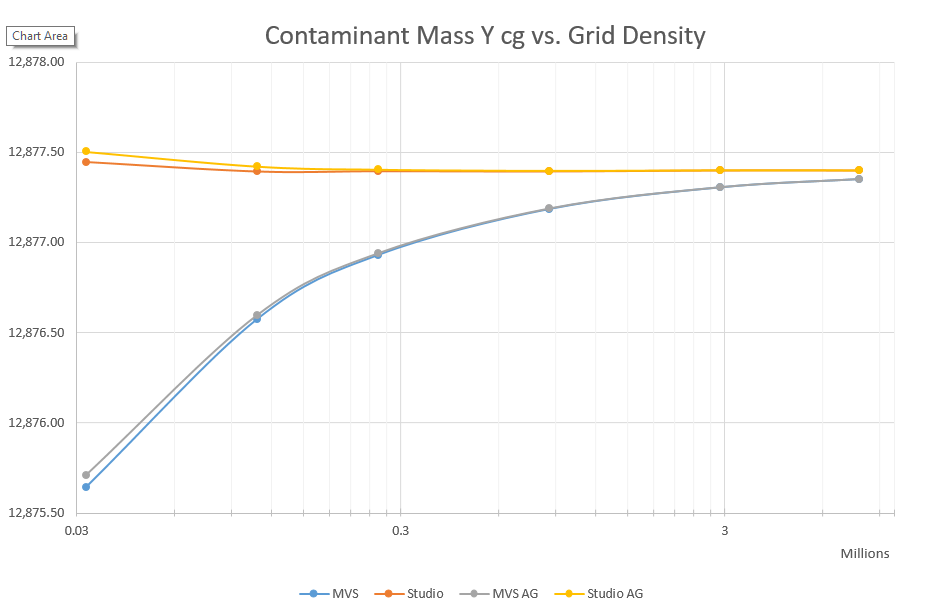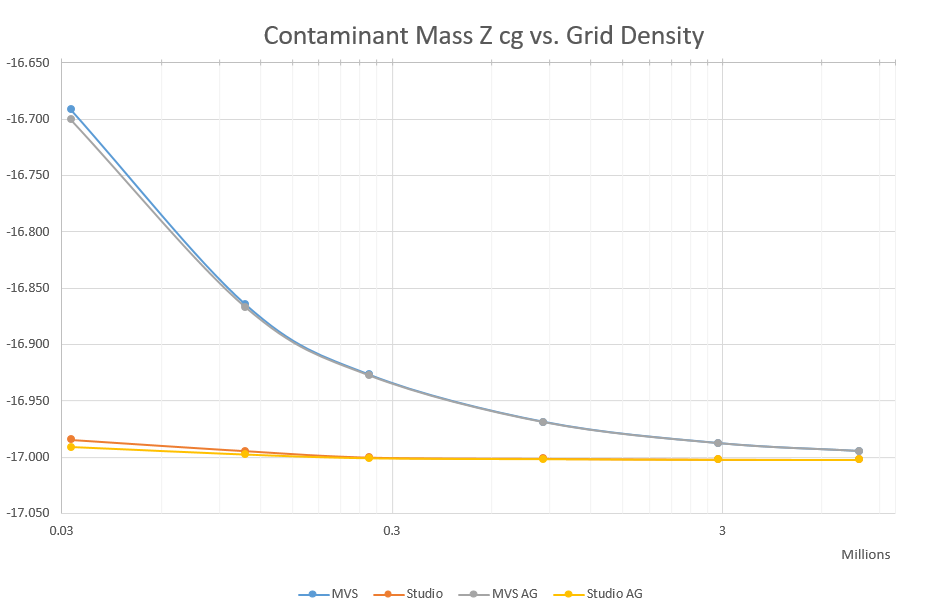Prior to the formal release of Studio, we did a comprehensive volumetrics study because we were making significant changes to both volumetrics and subsetting (e.g. plume) modules in Studio. In that study we looked at our new Studio algorithms compared with MVS as a function of grid resolution.
We’ve always known that as you increase the resolution of your model, the accuracy improves and we always see volumetrics results approach an asymptotic “theoretical” value as the grid resolution is increased.
Our new algorithms in Studio work dramatically better than MVS, but we didn’t make a big deal about it, primarily out of concern that by saying that Studio is much better, we could be misconstrued as saying that MVS was somehow WRONG before. In reality, everything we do (and by reference, everything you do with our software) is geostatistical by nature. It is a best estimate. And usually it is only a fair estimate because of data quality.
In our study we focused on Chemical Mass (not plume volume) of the entire model, as well as X, Y, Z CG and Average Concentration. If you additionally consider subsetting (plumes) they will effectively decrease the model resolution since the subset upon which you are computing volumetrics is a portion of your total model that has a lower effective resolution. The higher the subsetting (plume) level, the lower the effective resolution and the poorer your results may be.
The tables below summarize our results which are also given as graphs. For both Studio and MVS we did the calculations with and without Adaptive Gridding (AG) for the total number of nodes ranging from 30,000 to nearly 8 million. For all cases, we are computing volumetrics on the entire grid without any subsetting. Both Studio and MVS reported exactly the same volume for the full grid which was 350,950 cubic meters. This was not affected by resolution nor by adaptive gridding.
In our study, there were very minor if any differences in volumes or plume volumes between Studio and MVS. The biggest differences seen were in the computation of Chemical Mass and those parameters derived from chemical mass.
The first, and perhaps most surprising observation of our study is how little impact (improvement) Adaptive Gridding makes for either MVS or Studio. Adaptive Gridding does ensure that the data extremes in your 3D gridded output will better match your input data, but with respect to improving volumetrics accuracy, your time is better spent kriging a finer grid than waiting for Adaptive Gridding to finish. The reason for this is that Adaptive Gridding refines the grid in localized areas around your data samples, but does not improve the grid globally.
As you can see, the Studio volumes are always higher than MVS, but are within 1-2% of the asymptotic value at virtually all grid resolutions. For MVS, the volumes can be 20-25% low when the resolution is too coarse, but both Studio and MVS approach the same solution at high resolutions..
Average Concentration is derived from Contaminant Mass, and therefore is equally affected by the differences in accuracy as can be seen in the graph above.
The three graphs below show the deviations in the CG or centroid of the contaminant mass in X, Y and Z. A similar affect is seen here where Studio is markedly better at lower grid resolutions, but both Studio and MVS converge to virtually identical results at high resolutions.



